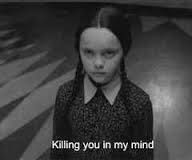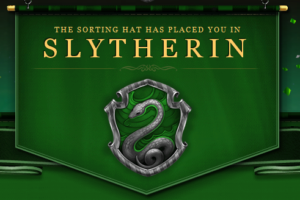If there’s a unifying theme to this month’s links, it might be “Put yourself in a different frame of mind.”
How does Christianity sound to a person on the autism spectrum? Reading Aspie Twitter has made me realize that I have some spectrum-y traits, particularly in the area of sensory processing disorders, as well as a tendency to take people’s explicit statements and ideas at face value and downplay social-emotional cues that contradict what they’re saying. My literal-mindedness was only enhanced by being subjected to manipulation and gaslighting in my childhood. Nowadays, perhaps I could figure out your unspoken subtext, but I often choose not to, in order to deter passive-aggressiveness and hypocrisy, and avoid spinning out into the old hypervigilant anxiety of waiting for the “gotcha!” from my personality-switching parent. I try to force people to rise to the level of my candor, with varying degrees of success.
When it comes to religion, my Aspie-ness probably makes me less comfortable than the average churchgoer with contradictions between official doctrine and lived experience. Whereas a neurotypical person might bracket theological objections in order to enjoy the interpersonal and aesthetic aspects of church, and understand that this is actually the point of church, I become twitchy at any hints that we either don’t believe or don’t care what we’re saying in the liturgy. I wonder if people on the spectrum are less likely to be affiliated with organized religion, and if this is why.
The progressive Christian blogger “perfectnumber628”, an American woman working in China, also observes that self-advocacy for non-neurotypical needs can be wrongly suppressed by the Christian culture of self-effacement. In her March post “Honest Lent: ‘Seek First God’s Kingdom’ Doesn’t Work If You Have Autism”, she notes, for example, that when certain sensory stimuli are more overpowering for you than the average person, you can’t just take care of everyone else first and wait around for well-meaning people to reciprocate, because they won’t even know that you need help unless you explain it.
I used to act uncertain when I tried to communicate about the loud-sounds problem. I didn’t have the language I needed back then- I didn’t know it was about needs and pain; I thought it was me being weak and unreasonable and selfishly asking for special treatment. I used to ask instead of tell. My tone of voice showed that I believed it was an unreasonable request, and so people didn’t take it seriously- or they made suggestions based on their total ignorance of the problem, and I treated those suggestions as more important than my “silly” sensory issues (which, I thought, are my own fault because I could choose to go to therapy and become “normal”). I used to end those conversations with “I don’t know if I’ll be okay with that or not, but … okay.”
But now I’ve learned to say it this way: “Loud sounds are extremely painful for me, so if there are balloons at the party, I will not be able to go.” Like it’s just a fact of the universe, just a simple cause-and-effect, and I’m not going to entertain any suggestions about how I should “get over it” and “it’s not that bad.” I’m very much “leaning on my own understanding” here- nobody told me “it’s perfectly reasonable for you to avoid things that make loud sounds, because they cause pain to you in a way that’s completely different from what most people are experiencing.” I figured that out on my own, and it’s not like I can ask other people to confirm it- they don’t know what I’m feeling, and I don’t know what they’re feeling. I’ve decided I don’t need anyone’s permission to advocate for myself. If I say this is what I need, then I have the right to tell people and expect to be taken seriously.
I used to “seek first God’s kingdom,” but God did not take care of my other needs. The only way to make sure those unique needs are met is if I stand up for myself, if I communicate to other people that this is a real thing that needs to be taken seriously. Any hesitation, any “humility”, any “putting others first” on my part, when coupled with the fact that other people can’t relate to what I’m feeling, gets interpreted as an indication that what I’m asking for isn’t a real need that other people should care about.
Written from an autistic perspective, but useful for everyone, Real Social Skills is an insightful blog about social rules, boundaries, power dynamics, and resisting abuse and ableism. This article from February, “On trauma aftermaths that don’t advance the plot”, is a must-read for fiction and drama writers who are creating characters with PTSD, as well as people seeking to support us in real life. Life with trauma is less about dramatic revelatory moments, and more about mundane but essential accommodations for chronic fatigue and distraction. What if “I’m triggered” was as straightforward as “I’m allergic to peanuts”? Just let us be honest about our self-care without probing for the story behind it.
It can be exhausting when people see you as a story and expect you to advance the plot whenever they notice some effect of trauma. Pressure to perform narratives about healing doesn’t often help people to make their lives better. Effect support involves respecting someone as a complex human, including the boring parts.
The aftermath of trauma is a day-to-day reality. It affects a lot of things, large and small. It can be things like being too tired to focus well in class because nightmares kept waking you up every night this week. TV wants that to be a dramatic moment where the character faces their past and gets better. In real life, it’s often a day where you just do your best to try and learn algebra anyway. Because survivors do things besides be traumatized and think about trauma. Sometimes it’s not a story. Sometimes it’s just getting through another day as well as possible.
A lot of triggers are things like being unable to concentrate on anything interesting because some kinds of background noises make you feel too unsafe to pay attention to anything else. For the zillionth time. Even though you know rationally that they’re not dangerous. Even though you know where they come from, and have processed it over and over. Even if you’ve made a lot of progress in dealing with them, even if they’re no longer bothersome all the time. For most people, recovery involves a lot more than insight. The backstory might be interesting, but being tired and unable to concentrate is boring.
Triggers can also mean having to leave an event and walk home by yourself while other people are having fun, because it turns out that it hurts too much to be around pies and cakes. Or having trouble finding anything interesting to read that isn’t intolerably triggering. Or having trouble interacting with new people because you’re too scared or there are too many minefields. Or being so hypervigilant that it’s hard to focus on anything. No matter how interesting the backstory is, feeling disconnected and missing out on things you wanted to enjoy is usually boring.
When others want to see your trauma as a story, their expectations sometimes expand to fill all available space. Sometimes they seem to want everything to be therapy, or want everything to be about trauma and recovery.
When others want every reference to trauma to be the opening to a transformative experience, it can be really hard to talk about accommodations.
Another problematic use of trauma as character backstory is the trope that unresolved anger from abuse turns people evil. Meant to humanize a villain character, this trope can easily have the reverse effect of making survivors seem antisocial and dangerous. Abigail Nussbaum’s sci-fi review blog Asking the Wrong Questions delves into this problem in her 2011 analysis of the X-Men movies. Our sympathies are supposed to lie with Professor Charles Xavier, the assimilationist mentor of the super-powered mutant X-Men, while Erik a/k/a Magneto, a Holocaust survivor, doesn’t believe in the possibility of peaceful coexistence between humanity and his kind, and is therefore positioned as the villain. But what if Xavier’s virtue is simply privilege?
…what troubles me about the film is that it feels like yet another expression of an attitude that I’ve been noticing more and more often in Western, and particularly American, popular culture as it struggles with the topic of genocide and national trauma–a crucial failure of empathy, imagination, and, finally, perspective, that leads to a blanket condemnation of anger. I saw this in Battlestar Galactica when human characters who refused to make peace with the Cylons–the people who had destroyed their civilization–were made into villains. I noticed it a few weeks ago when I watched an old Star Trek: Voyager episode, “Jetrel,” in which Neelix is urged, and eventually agrees, to forgive the person who designed the weapon that depopulated Neelix’s home colony and killed his entire family. And I see it in the increasing prevalence of vengeful victim characters, who are condemned not for the choices they make in pursuit of revenge, but simply for feeling anger. There is in stories like this a small-mindedness that prioritizes the almighty psychiatric holy grail of “healing”–letting go of one’s anger for the sake of inner peace–over justified, even necessary moral outrage. First Class condemns Erik not for targeting innocents and embracing the same prejudiced mentality as his Nazi tormentors, but for wanting to kill Shaw. It places two choices before him: either he takes the life of the person who killed his family and tortured him, in which case he’s a villain, or he relinquishes not only his quest for revenge but the anger driving it (the alternative of putting Shaw on trial for crimes against humanity is never suggested). As if to add insult to injury, the latter option is presented by Charles–a rich, privileged gentile who has not only never experienced a day of hardship in his life but who, as Mystique points out, has no problem passing for human–with a glibness that belies the film’s claim that he has seen Erik’s memories and fully comprehends his pain.
The key scene of X-Men: First Class has been repeated in all its trailers: Charles tells Erik that killing will not bring him peace; Erik replies that peace was never his goal. This is the moment that’s meant to define them as hero and villain–Charles, the man of peace; Erik, who embraces killing. To my mind it’s actually the moment that sums up the film’s moral bankruptcy. Charles is the hero because he thinks peace of mind is more important than punishing a mass murderer. Erik is the villain because he can’t stop being angry at the person who murdered his mother in front of him. Scratch just a little bit beneath that surface and you’ll find the ugly truth that underpins most of Hollywood’s attempts to grapple with the Holocaust and atrocities like it. Erik is a villain not because of what he does with his anger, but because bad things happened to him. Charles is the hero because he’s lucky enough not to have been victimized. The fact is, Hollywood–pop culture in general, actually–doesn’t like victims. It’s willing to feel sorry for them, but it won’t quite accept them as heroes. We want our heroes to be strong, inviolate. Victims–those who haven’t passed through fire unscathed, or somehow worked their way back to the exact same person they were before their ordeal–are suspect, damaged goods, defiled. We’d rather believe that there’s something wrong with them for how they react to their experiences than to accept that we too might react the same way. So we consign them to villainy, and embrace as heroes those who are simply fortunate. There was space in X-Men: First Class to buck against this trend, but instead it reinforces it. It bills itself as the story of how Charles and Erik became a hero and a villain, but the answer that it ultimately reveals is: because that’s how they were written.
Explanations are tricky things. I’ve always been odd: I have heightened perceptions, skills, and understanding in some areas, coupled with difficulties with some ordinary-life functioning. I think my origin story for these superpowers and handicaps has moved in a more and more socially acceptable direction, from “I’m smarter than everyone” to “I have the true religion” to “I’m a trauma survivor” to “I’m kind of Aspie”. But any of these narratives are only useful to the extent that they help me love myself and build positive relationships with others. Used defensively, to explain to an unkind interlocutor why I can’t drive on highways/hate the beach/can read 100 words a minute/know way too much medieval English history/made up my own religion, self-labeling can expose one’s core self to an even more painful attack than the original criticism of the behavior. So be careful about using your identity group as a human shield. I guess my most important “real social skill” is holding to the principle that we should embrace each other’s diversity, whether or not we understand it.



